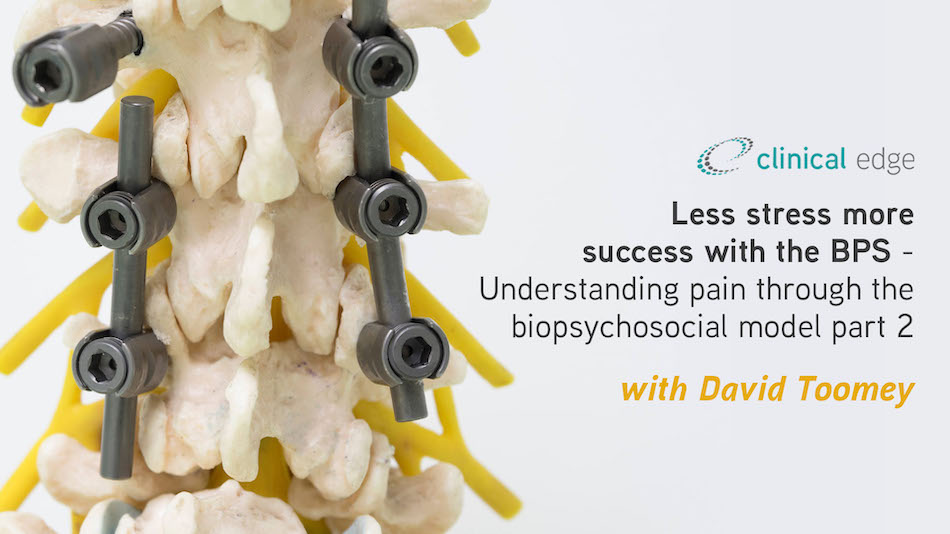When patients have low back pain that persists for years despite rehab and surgery, how can you use a biopsychosocial (BPS) approach to overcome their pain and functional limitations?
Now available - Less stress more success with the BPS - Understanding pain through the biopsychosocial model part 2 with David Toomey

Discover how to use exercise, education and manual therapy in an evidence-informed BPS approach that achieves results with your persistent pain patients in this case study presentation with David Toomey (Musculoskeletal Physio & PhD Candidate). You’ll explore:
- The case study of a patient with persistent low back pain after a snow-skiing accident, subsequent surgery and years of rehab.
- How to use a comprehensive BPS approach incorporating exercise, education and manual therapy (MT) to improve pain.
- How to use this approach to achieve patient goals & progress complex or persistent pain patients along the road to a successful recovery.
- How to tailor your treatment to incorporate patient goals and preferences.
- How to address BPS factors you identify such as fear avoidance, beliefs that pain = damage, and feeling like their back is “fragile”.
- How to use manual therapy (MT) as part of a BPS approach with persistent pain patients.
- How to explain MT in a way that removes reliance on passive therapies, and improves patients' confidence in their low back strength and robustness.
- Exercises and progressions you can use with your persistent low back pain patients.
Explore this low back pain case study now, and improve your persistent pain treatment results using a BPS approach that incorporates exercise, education and manual therapy.
CLICK HERE to improve your assessment & diagnostic skills with a free trial Clinical Edge membership
